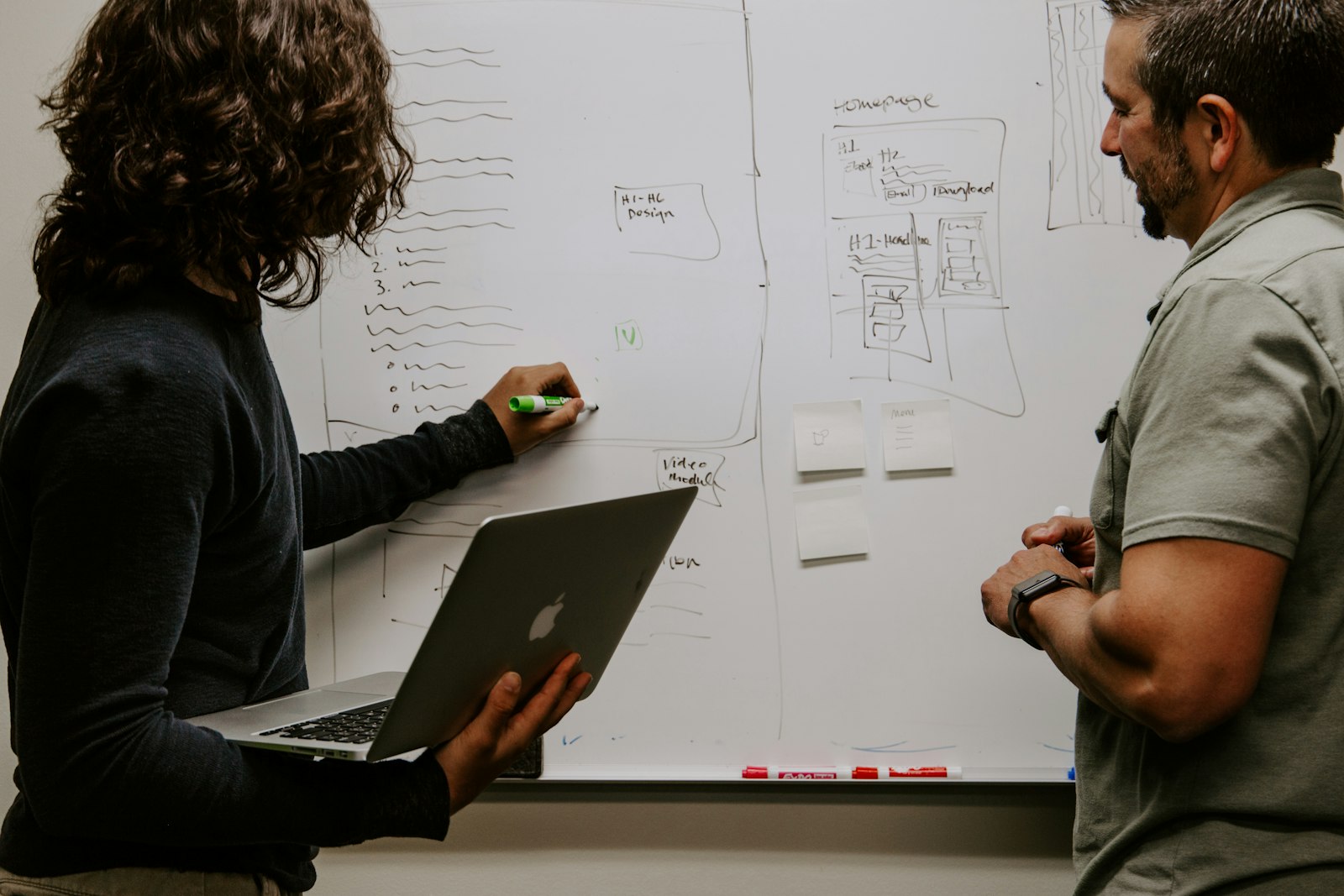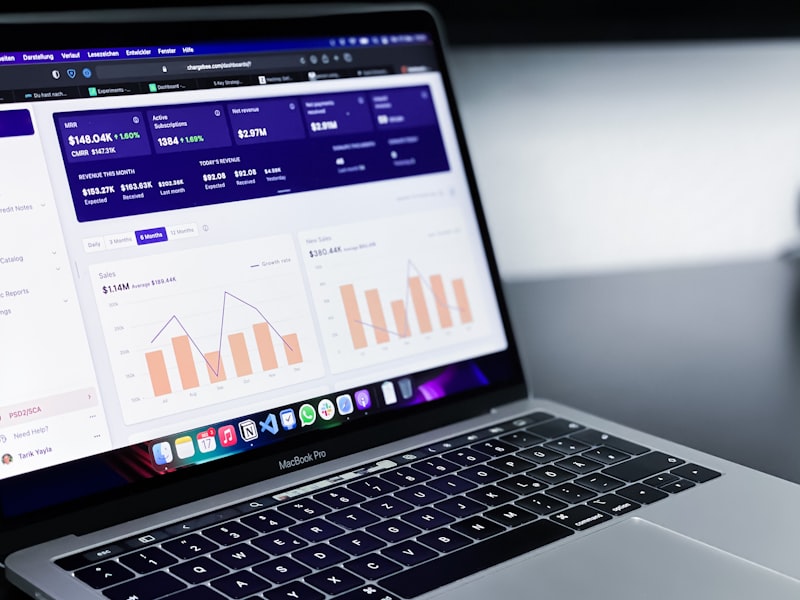"The future of growth is product-led."
- Wes Bush, Founder of the Product-Led Institute
Product-led growth. The hottest buzzphrase in SaaS right now. The magical panacea that will 10x your growth overnight. Just toggle the big red PLG switch and watch your revenue graph hockey stick, right?
If only it were that easy.
Yet that's how it's portrayed by the cult of social media "growth hackers" and their barrage of banal blog posts. They peddle PLG as some revolutionary revelation - a radical break from the dark ages of traditional sales. The promised land where products market and sell themselves autonomously like sentient beings. No human interaction required!
But let's get real. PLG is not some silver bullet. Implementing it requires more than just plastering a "Sign Up Free!" button on your site and calling it a day. It's not a shortcut to exponential growth. PLG is a complex strategy that requires meticulous execution across the entire customer journey to work.
Too many founders are being oversold on PLG as a one-stop solution when it's actually more like a complete realignment of your go-to-market strategy. It touches everything - from product design to marketing to pricing. Done right, PLG allows you to build virality into the product experience and leverage usage as the main conversion driver. But botch the execution and you'll end up with an aimless product devoid of human touch yet also lacking viral stickiness.
So how does one actually implement PLG in reality instead of just buzzword bingo? Let's dig in...



What is Product-Led Growth?
Product-led growth is a go-to-market strategy focused on getting users to experience your product themselves as the main way to drive adoption. With PLG, your product is the main vehicle to acquire, engage, and retain customers.
The goal is to build a great product that people want to use, make it easy to try, and then convert some of those users into paying customers. Rather than trying to sell the value proposition upfront, you let users experience it directly in the product.
Some key characteristics of product-led growth include:
Free or freemium access - Allowing users to experience core value in your product for free reduces barriers to entry and gets adoption momentum going.
Self-service onboarding - Make it extremely easy for users to get started with your product, without needing sales assistance.
Viral loops - Incorporate viral loops into the product experience to fuel growth through word-of-mouth and network effects.
Upgrade path - Provide in-product prompts and messaging to convert free users to paying plans and higher tiers.
PLG contrasts with traditional sales-led strategies that rely more heavily on outbound sales and marketing tactics. The product often takes a backseat to sales conversations in those models.
With PLG, the product is the main event.

Why Product-Led Growth is Gaining Popularity
Several trends have contributed to the rise of product-led growth in recent years:
Lower distribution costs - The internet has dramatically lowered the cost of distributing software, making "try before you buy" models much more feasible.
Business model shifts - Subscription and SaaS business models lend themselves well to PLG strategies.
User expectations - Today's users expect to be able to easily sign up and try out software products before committing to a purchase.
Growth challenges - As outreach tactics like cold calls and emails become less effective, PLG represents a scalable growth model.
Essentially, PLG aligns well with the way users want to research, try, and buy products today. It represents a growth model that is well-suited to the digital age.

Benefits of a Product-Led Strategy
Adopting a PLG model offers several advantages, including:
Better product-market fit - PLG allows you to iterate on the product experience based on real user behavior and feedback.
Increased virality - Product usage and network effects can drive growth more sustainably than paid marketing.
Improved conversion - Users who actively experience your product convert to paid plans at much higher rates.
Lower CAC - With smaller sales teams needed, the customer acquisition cost can be much lower.
Scalability - PLG can facilitate faster business growth, especially for SaaS companies.
The end result is happier customers, faster growth, and more efficient customer acquisition.

Key Ingredients for Product-Led Growth
Implementing a successful PLG strategy involves getting a few key ingredients right:
Core Value Accessible for Free
The freemium model is often used, providing access to your core value proposition for free to seed adoption. This free tier should be generous enough that users can experience real benefits.
Frictionless Sign-Up and Onboarding
Minimize the steps needed for users to get started. Strive for instant account creation and intuitive product onboarding without requiring sales assistance.
Engaging and Intuitive Product Experience
The product itself needs to be well-designed, engaging, and intuitive. If the product isn't compelling on its own, conversion to paid plans will be limited regardless of PLG tactics.
Viral Loops and Incentives
Incorporate viral loops such as referral programs and social sharing that incentivize users to invite others. This can dramatically increase the velocity of intake.
Usage-Based Value Communication
Show actual usage data and value delivered to make the benefits concrete. Document value delivered in $ terms to aid subscription upgrade decisions.
Persistent CTAs and Offers
Within the product experience, use CTAs, nudges, and special offers to convert free users to paid plans at opportune moments when they see value.

Product-Led vs. Traditional Sales-Led Models
It helps to contrast PLG with traditional sales-led approaches:
| Metric | Product-Led Growth | Traditional Sales-Led |
|---|---|---|
| Primary growth driver | Product experience | Sales process |
| Product access | Self-service, free trial | Gated, sales conversation first |
| Onboarding | Self-service | Requires sales assistance |
| Conversion | In-product usage and prompts | Sales rep follow-ups and pitches |
| Focus early on | Product & activation | Lead generation |
Traditional models focus heavily on selling first before product experience. PLG flips this around.
Both models involve sales and marketing activities in practice, but PLG shifts the emphasis towards pull and product experience rather than push and sales conversations.
Common SaaS Pricing Models
| Model | Description | Pros | Cons |
|---|---|---|---|
| Freemium | Free access to core features, premium for advanced capabilities | Low barrier to entry, easier adoption | Can be hard to upgrade users, revenue delay |
| Limited Free Trial | Free access for a set time period, then pay | Allows user to evaluate product | Signup friction, requires credit card |
| Tiered Plans | Multiple packages at different price points | Flexibility for diverse users | Complexity around packaging and pricing |
| Per User | Price based on number of user seats | Scales with customer growth | Predicting usage difficult |
| Value-Based | Pricing based on value created for customer | Aligns to business outcomes | Hard to quantify value delivered |
Transitioning to a Product-Led Model

For companies wanting to transition from traditional sales-led growth to a product-led model, there are a few steps to take:
Build a great product - ensure you have product/market fit and a compelling offering before layering on PLG tactics.
Offer a generous free tier - provide free access to core features to seed adoption.
Simplify signup and onboarding - remove sales friction and make it easy to get started.
Add in-app engagement - incorporate notifications, prompts, and usage messaging.
Develop self-serve support - FAQs, docs, and in-app chat can cover basic questions and issues.
Incentivize referrals - referral programs encourage organic sharing and growth.
Optimize conversion flows - continuously improve in-product conversion paths.
Automate sales qualification- use product usage signals to automate lead scoring and prioritization.
Build process excellence - develop playbooks and training so support and sales can work with PLG model.
It's not an overnight transition. But with a thoughtful rollout focused on great product experience and conversion, companies can transform to product-led models.
Common Product-Led Growth Metrics
To track PLG success, companies should pay close attention to these key metrics:
| Metric | Description |
|---|---|
| New trial signups | The velocity of new users signing up for free trials |
| Trial -> paid conversion rate | % of free trial users who convert to become paying customers |
| Net dollar retention | Revenue growth from the expansion and renewal of existing customers |
| Virality | Referral signups, social shares, etc that spread awareness |
| Sales velocity | The rate at which new sales opportunities enter the funnel |
| Sales cycle length | The time it takes deals to move through the funnel to close |
| Sales efficiency | The % of sales reps achieving quota or revenue targets |
Analyzing these metrics helps companies optimize the PLG engine and cost-effectively convert product usage into revenue.
Top Product-Led Growth Companies
Many of the most high-growth SaaS companies have embraced product-led models:
Slack - Grew to over 500,000 users and $100M+ ARR through viral adoption and bottom-up rollout before ramping up enterprise sales.
Zoom - Video conferencing tool that grew largely through freemium self-serve model before later adding sales.
Dropbox - Quintessential freemium SaaS company, offered core file sync & share features for free.
HubSpot - Inbound marketing platform providing free access to core software to seed adoption.
Calendly - Scheduling app with generous free tier for core 1:1 appointment booking.
These and many other companies have shown how PLG can be a highly effective model - especially for SaaS startups looking to gain initial traction.
Key Takeaways
Product-led growth is about using your product itself as the main engine of customer acquisition. By making it easy for users to onboard and experience core value upfront, PLG fuels sustainable and scalable growth.
Benefits of PLG include higher conversion rates, lower customer acquisition costs, and better product-market fit. SaaS and digital companies are increasingly embracing product-led models.
Implementing PLG involves offering a generous free tier, minimizing sales friction, incorporating in-product engagement, and continuously optimizing conversion flows.
With the right product and tactics, companies can tap into the power of product-led growth to acquire and delight customers more efficiently. Your product itself can be your most powerful marketing tool.
FAQ
1. What are some key differences between product-led growth and sales-led growth?
The key differences between PLG and sales-led growth include:
User access - PLG provides instant self-serve access to try the product, while sales-led requires talking to sales first.
Onboarding - With PLG users can onboard themselves, while sales-led requires sales assistance.
Conversion - PLG converts users through in-app prompts and usage tracking. Sales-led relies on personal outreach and demos.
Focus - PLG focuses on great product experience upfront. Sales-led focuses on leads and pipeline first.
Customer education - PLG educates naturally through product usage. Sales-led requires sales teams to explain value.
Pricing - PLG utilizes freemium models, while sales-led uses fixed pricing.
In summary, PLG is more bottoms-up using the product as the vehicle, while sales-led is more top-down with selling first.
2. What are some prerequisites before shifting to a PLG model?
Some prerequisites for transitioning to PLG include:
- Strong product-market fit and a compelling product offering. Don't rely on PLG tactics only.
- Generous free tier providing real value to users. Don't just create a "limited trial".
- Usage data tracking to understand behavior and optimize.
- Ability to run in-app messaging and notifications to users.
- Self-serve support content to cover basic questions.
- Referral program and sharing capabilities to drive virality.
- Clear in-app upgrade prompts and conversion messaging.
- Updated segmentation and sales playbooks to work with PLG model.
You need the core product and in-app experience ready before layering on PLG optimization and messaging.
3. How do you determine the right free vs paid tier split for a PLG model?
Factors to consider when determining the free vs paid tier split include:
- Core value-driving features in free tier to seed adoption
- Advanced power features in paid to incentivize upgrade
- Compare competitor offerings and analyst research
- Model customer segments and their willingness to pay
- Monitor free tier usage and conversion over time
- Limit free tier to avoid abuse but don't hinder experience
In general, start more generous with your free tier and tighten over time if needed. Have clear tier messaging and in-app upgrade prompts.
4. What are some effective ways to convert free users to paid plans?
Some of the most effective ways to convert free users to paid include:
- In-app messaging on usage limits reached or value received
- Email and retargeting campaigns based on behavior
- Special pricing offers or discounts for first-time upgrade
- Free trial of paid tier with access to advanced features
- Warning before feature access is downgraded or removed
- Social proof of businesses upgrading and achieving objectives
- Scarcity and urgency around limited-time offers
Test different prompts and offers over time and optimize based on conversion data.
5. How do you calculate the viral coefficient to measure viral PLG success?
The viral coefficient measures how many new users each existing user invites on average.
To calculate:
- Look at new users added in a period (say last 30 days)
- Divide new users by total existing users over that period
- That ratio is the viral coefficient
So if you added 25,000 new users last month, and had 100,000 existing users, your viral coefficient would be 25,000/100,000 = 0.25
Aim for coefficients above 1.0+ for strong virality.
6. What are some common pitfalls to avoid with product-led growth?
Some common PLG pitfalls include:
- Weak core product that can't stand on its own merits
- Limited free tier that doesn't deliver full value
- Confusing self-serve onboarding experience
- Not tracking usage and behavior data to optimize
- No clear way to convert free users to paid
- Understaffed or undertrained customer support
- Attempting PLG before the product and messaging are ready
Avoid relying on PLG tactics without having the strong product foundation first.
7. How do you get teams outside of product and engineering bought into a PLG model?
Getting all teams bought into PLG requires:
- Educate all teams on PLG benefits and strategy. Don't just focus on execution.
- Show positive metrics and case studies to build confidence.
- Involve other teams (sales, marketing, support) in planning process.
- Align individual goals and incentives to PLG metrics like activation.
- Foster cross-functional collaboration vs silos.
- Phase the transition to allow small PLG wins first.
Executive sponsorship and consistent communication are key to getting organization-wide buy-in.
8. What should you optimize for first - conversion rate or visitor volume?
Generally focus on conversion rate optimization (CRO) before scale. Some reasons why:
- Hard to evaluate volume metrics without baseline conversion metrics first.
- Improving conversion impacts revenue immediately.
- Volume without optimization can just increase bad fit users.
- Easy initial CRO wins build confidence.
- Many early optimization ideas don't require big tech changes.
- Better to scale efficiently with optimization rather than unoptimized.
Once you have baseline conversion metrics, focus on volume and retention.
9. How do you calculate the impact of product-led growth on sales and marketing costs?
To quantify PLG impact on sales and marketing efficiency:
- Calculate CAC before and after PLG adoption - account for all sales and marketing costs.
- Determine sales team productivity before and after - revenue per rep, cycles, etc.
- Look at the % of product qualified leads over time.
- Review marketing spend as a % of revenue.
- Consider lifetime value of PLG customers vs other channels.
- Establish baselines, then measure metrics regularly after adopting PLG.
Isolating the PLG impact requires analysis of costs, revenue, team productivity and lead sourcing before and after transition.
10. What are some leading indicators that product-led growth is succeeding?
Some leading indicators of PLG success include:
- Increased user signups and trial starts
- Higher conversion rates from free to paid tiers
- Faster sales cycles for product qualified leads
- Increased referral signups and sharing
- Higher in-product engagement and retention
- More recurring revenue as % of total
- Growing proportion of revenue influenced by product
- Increased customer lifetime value and net dollar retention
- Lower customer acquisition cost
Tracking metrics like these early can determine if PLG is gaining traction before longer-term financial impact.







